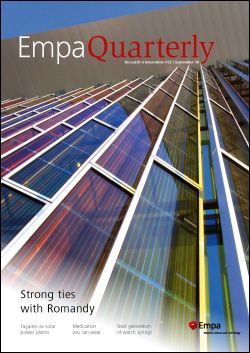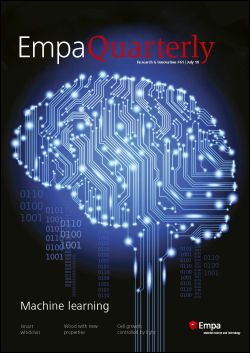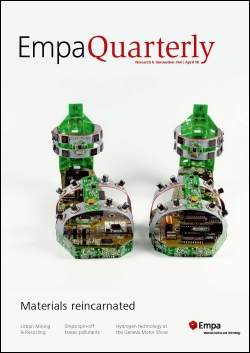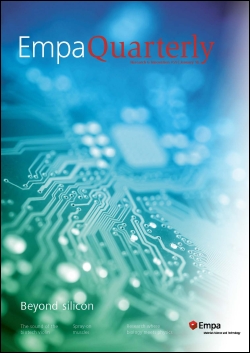EmpaQuarterly 2018
# 62 / October 2018 / Focus: Strong ties with Romandy
# 61 / July 2018 / Focus: Machine learning
Artificial intelligence will change our lives in the coming years – just as dramatically as the triumphant advance of smartphones. New opportunities are also opening up in materials research. Empa scientists use self-learning systems to process the pinpointed chemical modification of wood, blast rocks with electrical charges and monitor the quality of 3D-printed metallic workpieces – while they are being produced. In this issue of EmpaQuarterly you will see how “machine learning” works in general and what it can achieve especially in the field of materials science.
# 60 / April 2018 / Focus: Circular Economy
Today’s industrial societies offer their citizens comfort and ease, jobs and leisure, as well as an appropriate infrastructure. At the same time, the modern living environment is transforming into a warehouse brimming with precious raw materials that are coveted by industry. But just how big is the resource depot we live in? Which material flows feed it? Where can precious materials be extracted and re-used? The – or at least one – solution to the problem lies in closed material cycles: everything keeps getting recycled, is broken up into individual parts, given a new form, revalued and re-used. This is the focus of the current issue of EmpaQuarterly. Whether in the construction sector or as electrical waste, the materials lying dormant in the “urban mine” are simply too precious to be thrown away.
# 59 / January 2018 / Focus: Nano-electronics
Today’s microelectronics is based on silicon. With the increasing miniaturization, however, the material is reaching its limits. On the lookout for base materials for the next generation of electronics, researchers from Empa have struck gold: transistors made of graphene nanoribbons might enable the computers of the future to run faster, with better energy-efficiency and, therefore, much cooler. Another topic being investigated at Empa: image sensors made of perovskite nanocrystals – which enable maximum light sensitivity with a high resolution, one step towards the next generation of digital cameras.

Empa Quarterly
Want to subscribe to our magazine? It's easy, simply click here.
Archive
Do you want more stories from Empa's labs? Check out previous issues of the magazine below.




